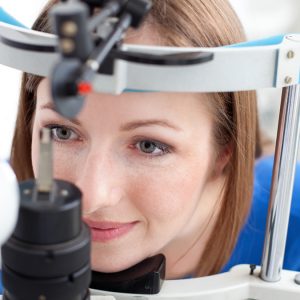What should an eye exam include?
Has it been a while since your last eye exam? Not sure what to expect during the process? Every person has unique optical needs, but a routine exam generally follows the same format. Let’s look at what usually happens during an eye appointment so you can be fully prepared.

Basic steps during an eye exam
An eye exam should include a complete eye health exam where all eye structures are evaluated. This includes:
- Retinal evaluation
- A refraction to determine glasses prescription, as needed
- Testing to determine the limitations of your natural vision (eye charts, pictures, etc.)
- Assessment of your eye movement (“follow my finger from left to right”)
- Imaging to evaluate your eye health
- A brief interview to pinpoint any struggles or concerns you have
The goal of the eye exam is to assess your eye health and correct or prevent issues in the future. This may involve a prescription for corrective lenses or recommendations for ongoing eye treatment in the event of glaucoma or cataracts.
What happens after the eye exam
After your eye exam is complete, you may decide to order contacts, try on glasses, or discuss other corrective lens options. Some optometrist offices have glasses available in-store, and others strictly provide prescriptions. In either case, you can review your insurance coverage before purchasing to choose the appropriate frames/lenses for your needs and budget.
How often should I see the eye doctor?
If your eye exam reveals no discerning issues, you can see the eye doctor once every 3-5 years. If there are vision problems, you may need to see the doctor every 2-4 years, or even once a year in some instances. Your eye doctor can recommend the appropriate frequency based on your individual needs.
Contact Oklahoma City Vision to get started if you’d like to schedule an eye exam for yourself or your child. We accept many forms of insurance, and we’d be happy to answer any questions you may have.
